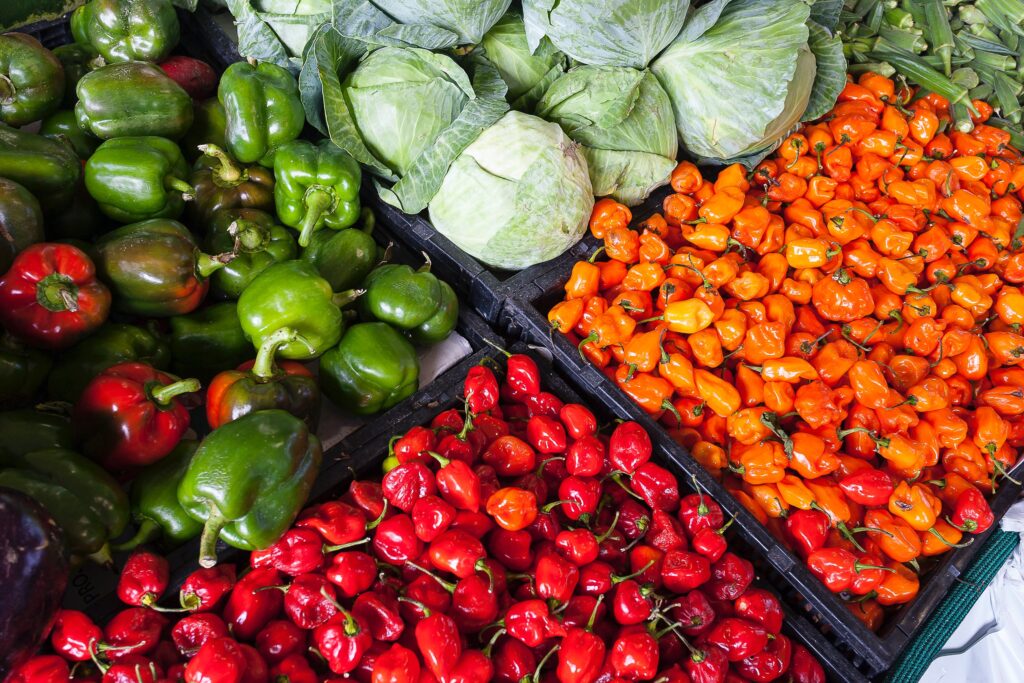The easiest crop to farm will depend on a variety of factors, including the climate and soil conditions of the area where you are farming, as well as your experience and resources. Some crops are generally easier to grow than others because they are more resistant to pests and diseases, or because they have shorter growing seasons or require less labor to cultivate. Some examples of easy-to-grow crops include:
- Leafy greens: Lettuce, spinach, and other leafy greens are relatively easy to grow and have a short growing season. They can be grown in a wide range of climates and soil types, and they do not require a lot of space or specialized equipment.
- Herbs: Many herbs, such as basil, cilantro, and parsley, are easy to grow and thrive in pots or small garden beds. They are also relatively resistant to pests and diseases and can be grown in a wide range of climates.
- Root vegetables: Root vegetables, such as carrots, beets, and radishes, are relatively easy to grow and do not require a lot of space. They are also relatively resistant to pests and diseases and can be grown in a wide range of soil types.
- Squash: Squash, including zucchini, pumpkin, and winter squash, are relatively easy to grow and have a long growing season. They can be grown in a wide range of climates and soil types, and they do not require a lot of specialized equipment or care.
It is always a good idea to research the specific requirements and challenges of different crops before deciding which ones to grow.
How much profit do farmers make per acre?
The amount of profit that a farmer makes per acre can vary widely depending on a variety of factors, including the type of crops or livestock being raised, the location of the farm, the price of agricultural products, and the costs of inputs such as seeds, fertilizers, and feed. In general, farmers who are able to produce high-value crops or livestock, such as organic produce or grass-fed beef, may be able to earn higher profits per acre. However, it is important to note that many farmers face significant challenges and risks, including weather-related crop failures, changes in market conditions, and rising costs for inputs, which can impact their profitability. It is also worth noting that the profitability of farming can vary significantly from one year to the next, and many farmers rely on multiple sources of income to support their operations.
How to start a farm with no money?
Starting a farm can be a challenging endeavor, especially if you don’t have a lot of money to invest. Here are a few strategies that you might consider if you want to start a farm with no money:
- Lease land: One option is to lease land from a landowner instead of buying it. This can be a good way to get started with a smaller financial investment, and it may also allow you to test out different locations or farming practices before committing to a long-term investment.
- Partner with another farmer: Consider partnering with another farmer who has experience and resources, and who is willing to help you get started. You could work out an arrangement where you contribute labor or other resources in exchange for a share of the profits.
- Look for grants or loans: There are a number of programs that provide grants or loans to beginning farmers, including the Beginning Farmer and Rancher Development Program (BFRDP) administered by the USDA. These programs can provide financial assistance to help you get started, but they may have specific requirements that you will need to meet.
- Start small: Consider starting with a small-scale operation that requires minimal capital investment. For example, you might start by growing vegetables in a small garden or raising a few chickens for eggs. As you gain experience and resources, you can gradually expand your operation.
- Seek out mentors: Find a mentor or advisory group that can provide guidance and support as you get started. Many organizations, such as land trusts or extension programs, offer mentorship or training programs for beginning farmers.
Starting a farm can be a rewarding and challenging endeavor. It is important to do your research, seek out resources and support, and be willing to work hard to achieve your goals.
Can you make a living farming 50 acres?
It is possible to make a living farming 50 acres of land, depending on the type of farming you are doing and the resources and infrastructure you have available. However, the profitability of a 50-acre farm can vary widely depending on a variety of factors, including the location of the farm, the type of crops or livestock being raised, the price of agricultural products, and the costs of inputs such as seeds, fertilizers, and feed. In general, farmers who are able to produce high-value crops or livestock, such as organic produce or grass-fed beef, may be able to earn higher profits per acre. However, it is important to note that many farmers face significant challenges and risks, including weather-related crop failures, changes in market conditions, and rising costs for inputs, which can impact their profitability. It is also worth noting that the profitability of farming can vary significantly from one year to the next, and many farmers rely on multiple sources of income to support their operations.
How much land do you need for profitable farming?
The amount of land needed for profitable farming will depend on a variety of factors, including the type of farming you are doing, the location of the farm, the price of agricultural products, and the costs of inputs such as seeds, fertilizers, and feed. In general, farms that are able to produce high-value crops or livestock, such as organic produce or grass-fed beef, may be able to earn higher profits per acre and may be profitable with a smaller amount of land. However, it is important to note that many farmers face significant challenges and risks, including weather-related crop failures, changes in market conditions, and rising costs for inputs, which can impact their profitability. It is also worth noting that the profitability of farming can vary significantly from one year to the next, and many farmers rely on multiple sources of income to support their operations.
What type of farming makes the most money?
The type of farming that makes the most money can vary widely depending on a variety of factors, including the location of the farm, the price of agricultural products, and the costs of inputs such as seeds, fertilizers, and feed. In general, farms that are able to produce high-value crops or livestock, such as organic produce or grass-fed beef, may be able to earn higher profits per acre. Other types of farming that may be more profitable include specialty crops, such as fruits, nuts, and vegetables, and agritourism operations, which can generate income through activities such as farm tours, pick-your-own operations, and on-farm events. It is important to note that the profitability of farming can vary significantly from one year to the next, and many farmers rely on multiple sources of income to support their operations.






